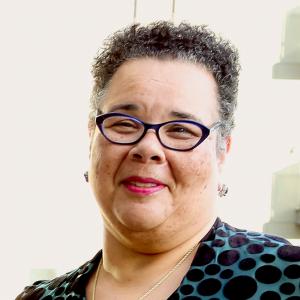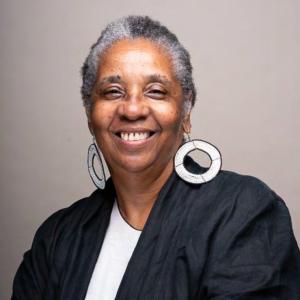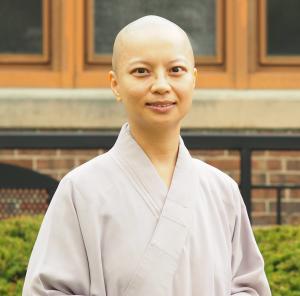Resources
Silhouette Interview with Ralph Watkins Columbia Theological Seminary

A common aspect of websites is “Frequently Asked Questions.” This is a handy feature. It is meant to assist the inquiring person with succinct information. It is meant to answer questions searchers did not know they have or provide answers to questions for which they have specific interest. It is also a way for the business to be able to articulate, in a concise way, their benefits, capacities, and capabilities. The key to FAQ is that they are not the questions of the business, but they are the questions of the client to the business. The value is that the business has answers to these distinct and important questions. I do not want to push this metaphor too far. I do not think our students are our clients, customers, nor benefactors. At the same time, I do think that it is important for us, in introductory course preparation, to take-on an empathic perspective for our students. We must consider, from their perspective, that they are learning new language, new concepts – never before exposed to - ideas. We must anticipate a version of their FAQ. Teachers must take time to think-through, reflect upon, and design succinct articulation of the benefits, functions, and qualities so that introductory courses are not perfunctory, stale, or unintelligible. Learners should not have to wait until the completion of the degree before they are able to understand and meaningfully interpret the introductory syllabus. Below, is a list of reflection questions with learner’s FAQ in mind. Of course, this is not an exhaustive list of their questions. This list is meant to spark conversation so colleagues, in context, can discuss, compare-and-contrast, and consider what is better/best for their own introductory courses and the students who trust us with their learning. One: What is the intention of this introductory course? This might be the most difficult of all their questions. If you cannot say the thesis of the course WITHOUT jargony words or technical language or theoretical phrases for which the students have yet to be exposed or taught, then the course is not yet ready to be taught. For your introductory course, what is the punch line, thesis statement, refrain, big idea? Please write in language that can be understood before the study of the course material. From the student’s perspective, what am I about to be graded about? Two: What is the approach of the course? The information age is eroding the notion of one supremist perspective for teaching the big questions of life and scholarship. Unmistakably, there are major shifts in the academy for including multiple voices and many worldviews, even starting with introductory courses. Ideas in introductory courses are no longer “obvious” or “natural” or “to be expected under the circumstances” – a kind of “of course” attitude or “everyone knows” posture as if there is no need for deliberation or new planning or thinking anew. The question of scholarly approach is in story. In the course, whose story are the learners being asked to enter into? And if not their own story – then why not? What cultural assumptions and presuppositions are operative in the framing of the introductory course? To what are you asking me (the learner) to open my mind and how will this benefit the people who have sacrificed for me to be a student? What student skills, practices and habits will I need to be successful? What new skills will you expose me to for my learning? The more racial, cultural, ethnic, and age diversity of your learners, the more complex the response must become. Remember that complexity does not have to lead to convolution. Three: Why does this course matter? The question of relevance is a critical question to learners. The question is sometimes pragmatic and sometimes political – always on their minds. What do you expect students to become or do as a result of the course? How much time will it likely take before students learn, change, grow in this material – weeks, months, years? The question of relevance will shift with the demographics of your students. The more divers your students, the more complex the response to this question must become. There can be, if we grapple well, elegance in complexity. The question of relevance is directly related to teaching anecdotes to mis-education. This will be particularly vital for majority culture students. Four: What is the vocabulary of the course? In the first session of my introductory courses, I got in the habit of initiating a conversation about vocabulary. As part of rehearsing the syllabus, I would tell my students that during the semester I would teach them words that, at first, would feel awkward in their mouths. I told them we would be using a language and jargon that would not work at church potlucks or cocktail parties. But I told them, as learned people, we have a vocabulary for which they must become proficient, even fluent. The presence of students who speak many languages learning along-side students who speak only one language makes this question more complex. Five: How? How will students learn? How will students pass this course? What will I be asked to do to learn? What will be the task of my body while learning? Am I just to sit and listen as you talk? What student skills, practices and habits will I need to be successful? What new skills, practices and habits will you teach me to engage my learning in this course? What will there be to: see, smell, taste, hear, feel – to intuit? Will there be field trips, excursions, people to meet, new places and encounters where I welcome the stranger and make them my friend? Will I have opportunity to be as a stranger in hopes of being welcomed? The educational formation which brought students to college, graduate school and seminary will have shaped, formed or deformed learners. Awareness and attention to student’s previous experiences of coursework is critical to answering this question. If there are a diversity of students, e.g. international students and minoritized students, this question becomes much more complex. Six: Teacher – who are you? We know that many minoritized students learn better when they relate well to the teacher. For them/us, learning is communal and relational. For many majority culture students, the attitude, opinions, and affirmations of teachers is less important and plays a lesser role in their achievement. For BIPOC faculty, all students will likely wonder or question the credentials, institutional value, and authority of those instructors. The identity politics in classrooms is often dangerous for BIPOC faculty, so knowing what and what not to disclose is complicated. We know from Parker Palmer, noted teacher and author, that we teach who we are. Seven: Who is the learner? What does it take to design an introductory course before meeting the students on the first day of class? What can be known about the enrolled students for better course planning? What are the fears of the learners? By what course design and strategy will you quiet their fears early on course? The more diverse the student body, the more difficult and complicated an answer to this question will be. Who in your institution is tasked with providing a profile of each incoming class and a summary report of each enrolled student’s previous experiences and exposures to learning? Eight: How is the teacher’s passion taught in the introduction course? If not – why not? I have heard senior scholars say that they do NOT teach what interests them until they teach upper-level seminars because they believe introductory courses are not meant to reflect one’s own research interests, passions, or professional curiosities. From my perspective, this is wrong-headed and explains, a bit, why some introductory courses are so dull and insipid. How will your passions, unique knowledges, and scholarly knowhow be the cornerstone of your introductory course? Answering these questions does not create a syllabus. And I am not suggesting you add a section to your syllabus for “frequently asked questions.” These questions, as a combination, assortment, and hodgepodge, are meant to encourage your planning, preparation, and thoughtfulness to create empathy with and compassion for adult learners who dare to enter into classrooms of religion and theology. Our students, from the very beginning, deserve teachers who are ready and know how to invite them to learn. Learners want courses that are shared endeavors and not just the presence of a subject expert who has not considered the broader experience of their learning.
A Silhouette Podcast Interview with Alton Pollard Louisville Presbyterian Theological Seminary

Part One: Ritual Is Communal Learning. We might agree that “community” is a dynamic, divine dance among individuals who, at any given moment, can structure and normalize what might have begun as a spontaneous, enlivening interaction. Community, in the context of our classrooms, can either be a routinized structure of interactions, focused on a set of pragmatics (time allotted, prescribed lessons/topics, inherited answers to repeated questions), or a generative experience, full of imagery and ideas that are liberative to the spirit. In other words, we can create community to fulfill a set of accepted structures about learning, or we can create a space that courageously “touches the spirit.” This is the point of ritual, to touch the spirit, and it involves everyone in the space together experiencing the divine dance. Rituals, when seeking to connect meaningfully to the essence of our being, becomes a point of teaching and learning within the moment. I believe that there are such experiences of ritual in every culture because even as we are human, we are divine. Both aspects of our being desire existence. For those of us in theological education, we have the privilege to focus on both the human and the divine as a responsibility of teaching those called to do spirit work. Ritual invites the community of bearers and seekers to experience this transcendent work together and receive the benefits of communal learning to touch the divine within us together. Part of our challenge is operating in an ecosystem that pays more attention to rules and structures than the divine dance, trusting in our own aptitude and the genius of the spirit to decentralize oppressive rules and structures. My communities called me forth to be a keeper of the ritual. It was not until they gave voice to my “medicine” that I accepted it and began to develop it. Rituals became the first task when I settled myself into class preparation. I would find spaces to just listen. The listening would take even longer when I saw names of learners that I had in a previous class. It was much later that I realized that this listening was paying attention to ancestral voices whose “sight became my vanguard voice.” Ritual not only enlivened the purpose of the course beyond the accumulation of information, but it also afforded each one of us to sit with our individual social location in ritual as an opportunity for personal value in the communal space. With the ritual, we were measuring our worth based upon course content in relation to our lived experiences. We were adding value to the community by our existence and the value of being connected to one another. As I think about the adults who entered those classroom spaces and the complexity of their lives, the ritual space also became a moment of releasing and accepting without having to speak to the specifics of what was/would be going on. This is the healing aspect of ritual. Rituals create space for communal recovery and discovery. Rituals create space for rest. Do I require everyone in attendance to engage the ritual? I do not. Even for those who, in their own way, do not participate in the class rituals, they bear witness to it. And what we do know, is that you cannot unsee what you see, and you cannot unhear what you have heard. This is also the reason why ritual work is a deeply intentional and serious work. It is not an icebreaker or a gesture of novelty. This is an assurance: the presence of a person at the ritual affords them a chance to speak to the spirit.
Silhouette Podcast Interview with Emilie Townes

One of my courses is a first-year tutorial designed to fit in with the college-wide objectives to develop new students’ basic academic skills, including writing, critical reading, and oral communication. It also involves individually advising new students to navigate their learning journey until they declare their major field of study. Because the course has multiple goals, it took me a long time to think about an appropriate topic to connect college students’ academic success with their personal lives. I also facilitate students’ embodied learning in their first year. What strategies can I teach them that will enhance their learning progress while adjusting to a new school environment.When designing my course, I found Tammy J. Freiler’s view of being attentive to the entire body as a way of whole-person learning to be helpful. She argues that embodiment is an approach “to construct knowledge through direct engagement in bodily experiences and inhabiting one’s body through a felt sense of being-in-the-world…. It also involves a sense of connectedness and interdependence through the essence of lived experiencing within one’s complete humanness, both body and mind, in perceiving, interacting, and engaging with the surrounding world.”[1] The statement of “complete humanness” inspired my tutorial course topic, “Mindfulness: The Art of Living,” in which I guide students to develop a sense of physical and mental awareness.This is not a meditation course. Instead, the class uses mindfulness as a subject of study. Students study Jeff Wilson’s Mindful America (Oxford, 2014) to build reading, writing, and presentation skills. They also learn how to evaluate the credibility of online resources. While I guide students to take an active role in learning and exploring their academic interests, I encourage them to incorporate mindful practices into their professional performance and everyday life. Teaching the tutorial not only helps me critically reflect upon how to develop a more holistic view of education, but also makes it clear that the traditional approach to teaching mindfulness focuses primarily on the mental aspect, which creates some pitfalls. Although establishing mind-body interaction is the goal, it is easy to neglect the living body as a medium for knowing and connecting with the surrounding world. Several questions and challenges arise, and I have learned at least two noteworthy points about embodied learning. Providing practice-based learning opportunities is not enough. Active engagement is the key to triggering embodied experiences. This notion is too obvious to be overlooked. My first day teaching this class was a bit challenging, in part because it was ironic to guide a discussion about “mindfulness” when students were sleepy. The class started at 8:00 am, a time when young learners felt a lack of energy. Attempting to address this, I added two-minutes of mindful listening (to the natural sounds of birds singing or forest stream), combined with three minutes of relaxing body movement. In theory, this should have been beneficial and meaningful. Some students, however, did not find it useful. Why? The critical element is engaging with the doing and being immersed in the activity. It takes practice to hone one’s mindfulness and cognition. Students cannot gain any constructive effects unless they develop exactly their own whole-body practice, bringing sensory organs and the mind together.Learning space matters, but students may not be mindful of their interactions with the external world. Being at a residential college, all full-time students are required to live on campus, thus there are very few clear boundaries between living and studying spaces. How can I help students develop their bodily awareness in academic environments and beyond? I ask students to write a journal to observe their study habits and in what ways they learn the best. The main concern is whether their bodily activities are related to a learning task in a meaningful way, or not. In addition, I have them pay attention to where the most effective locations that enhance their productivity are, to help students think about how environments affect their cognitive process. Some students report locations where they feel less anxious while doing homework, including the Spencer Grill (a café), the atrium at the Human and Social Studies Center, and outdoors. None of them mention their dorm rooms. Students’ reflections are meaningful, as they develop their bodily awareness on campus, acknowledge the body as a basis for their being in the world, and create a personal connection with their surroundings. Teaching first-year students about mindfulness allows me to reflect that learning involves embodied cognition. Although most agree that mindfulness is a practical approach to dealing with day-to-day issues, not everyone values the importance of being attentive to the body. They tend to take their physical presence for granted, and aren’t aware of body experiences as a way of knowing. Thus, it is my responsibility to guide students to develop cognitive awareness, which can subsequently help them appreciate mind-body integration as a powerful tool to enhance productive learning. [1] Tammy J. Freiler, “Learning Through the Body.” New Directions for Adult and Continuing Education 119, (2008): 40, DOI: 10.1002/ace.304.